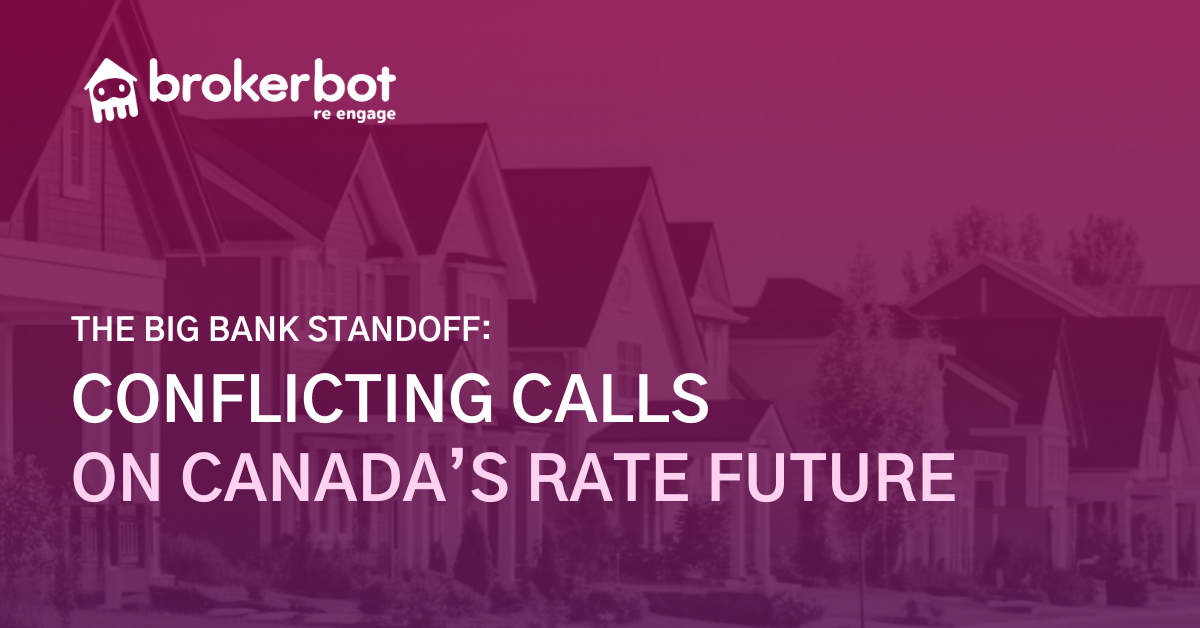Canada is about to renew nearly half its mortgages. The Big Six banks say it's under control. The data tells a more complicated story.
By the end of 2026, roughly 50% of Canadian homeowners will renew their mortgages—trading pandemic-era rates for something noticeably higher. The Bank of Canada estimates average monthly payments could rise by about $400, with some borrowers seeing increases of 15-20% depending on their mortgage type.
At the Barclays Global Financial Services Conference in New York last month, Canada's banking executives delivered their pitch: Yes, payments are going up. No, the system won't crack. The tone was measured, the talking points were polished, and the message was clear: this is manageable.
But is it?
The Renewal Reality: Who's Actually Getting Hit
Not every borrower is in the same boat. Approximately 60% of mortgage holders renewing over the next two years are expected to see payment increases, with the sharpest impact felt by holders of five-year fixed-rate mortgages, roughly 40% of the market. These are the borrowers who locked in rock-bottom rates in 2020 and are now facing a rude awakening.
On the other hand, nearly one-quarter of all mortgage holders are expected to see a decrease in payments by the end of 2026, particularly those with variable-rate products who've already absorbed the pain of rising rates over the past two years.
TD Bank offered some optimism: about 64% of its customers renewing in 2026 will see lower payments. For those facing increases, the bank says the average bump works out to roughly 3.5% of household income, which falls within stress-test limits.
Scotiabank echoed the sentiment, noting that while the average payment has risen about $200 per month since origination, that figure is expected to drop to around $130 as more borrowers renew at lower rates.
Equity Is the Safety Net—Until It Isn't
The banks are leaning heavily on one key cushion: equity. CIBC's CFO Rob Sedran pointed out that the bank's average loan-to-value ratio on uninsured mortgages sits just above 50%, with impaired loans closer to 60%. "So there's a lot of room there to absorb some of the impairment," he said.
RBC highlighted that nearly two-thirds of its mortgage clients have credit scores above 785, and the average score across its book is close to 800. Just 7% of RBC's portfolio has a combined loan-to-value above 80%.
That's the good news. The bad news? Mortgage delinquencies are rising. RBC's 90-day arrears climbed to 30 basis points, up from 19 bps a year earlier. CIBC's delinquency rate hit 36 basis points, while BMO's impaired loan provisions remain elevated at 45 bps.
And it's not evenly distributed. RBC's 90-day delinquency rate in the Greater Toronto Area now stands at 0.39%, significantly higher than the 0.23% rate seen in Vancouver and the 0.30% rate nationally. Windsor, hit hard by the weakness of the auto sector, is flagged as a pressure point.
Scotiabank noted that while variable-rate mortgage delinquencies appear to be leveling off, fixed-rate arrears are now trending higher; a signal that the payment shock from renewals is starting to show up in the data.
What Banks Aren't Saying
Here's what didn't get a lot of airtime at the Barclays conference: Equifax data shows overall mortgage balances past due rose 43% year-over-year in late 2024, with 90+ day delinquencies increasing from 0.14% to 0.20%. That's still low by historical standards, but the pace of increase is notable.
Non-bank lenders (mortgage investment entities, private lenders) are seeing even higher stress. These aren't captured in the Big Six's rosy stats, but they're part of the ecosystem, and they're canaries in the coal mine.
Banks are also quietly shifting strategies. National Bank utilized its conference time to discuss its U.S. expansion through Credigy, focusing on high-credit-score, low-LTV structured mortgage credit. BMO noted that performing provisions have slowed after building nearly $900 million over the past year. TD emphasized its disciplined approach to condo exposure and developer loans.
Translation: growth is out, stability is in. Banks are done chasing market share.
The Regional Story Matters
Affordability remains brutal in key markets. RBC's latest index reveals that while ownership costs have returned to more typical levels in the Prairies, cities such as Toronto, Vancouver, and Victoria continue to be among the least affordable in the country. Nationally, the share of median household income needed to cover homeownership costs has declined—from 63.5% in late 2023 to 53.6%—but remains well above pre-pandemic levels.
In Ontario and British Columbia, more than 10% of renewals saw average monthly payment increases of $500 or more in Q4 2024, putting additional strain on borrowers already managing high mortgage balances.
What This Means for Brokers and Agents
If you're advising clients heading into renewal, here's the play:
- Equity is king. Borrowers with strong equity positions have options, including extending amortization, accessing HELOCs, or refinancing to consolidate debt. Those with thin equity are at a disadvantage.
- Product type matters. Five-year fixed borrowers are getting hammered. Variable-rate borrowers who've already eaten the pain may actually see relief.
- Geography is destiny. A borrower in Calgary faces a different reality than one in downtown Toronto or Windsor.
- Stress-test assumptions still hold—for now. Most borrowers were qualified at rates well above what they'll renew at, which gives them breathing room. But that assumes stable employment and income growth.
The banks are betting on falling rates, substantial equity, and solid credit scores to prevail. They're probably right—for most borrowers. However, "most" isn't "all," and those who don't make it through cleanly are concentrated in predictable areas: recent buyers, economically soft regions, and borrowers who stretched to buy at the peak.
This isn't 2008. But it's not nothing, either. The renewal wave is real, the payment shock is real, and the cracks are starting to show. Pay attention to where your clients sit in the risk spectrum, because the banks sure are.

.png)
.png)
.png)

.png)
